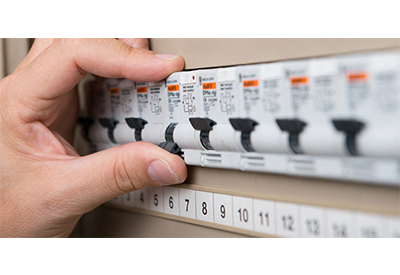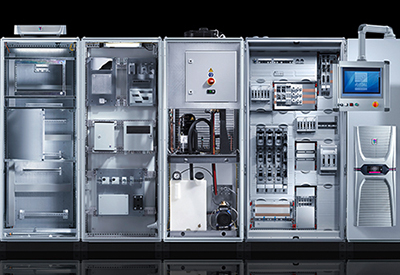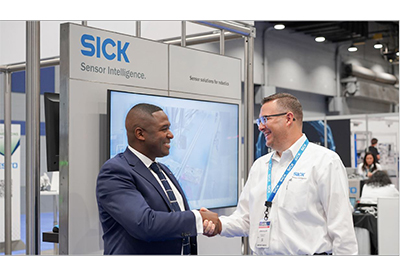Why Are Discrimination Studies Among Protections So Important?

July 6, 2020
Discrimination studies are an essential factor in the design of any electrical installations. Professionals carry out an exhaustive analysis of the electrical protections needed to guarantee the continuity of supply in case of failure. A good discrimination study allows the coordination of different protections at different levels of electrical installations.
In fact, the proper setting of the protective devices allows us to easily identify where the fault has occurred. More specifically, the selective coordination generally describes the selection of the protective devices to isolate the overcurrent condition so that the device nearest to a fault will trip rather than any device further ahead of it.
What is a selectivity study?
The terms “discrimination” and “selectivity” refer to the electrical current tripping of a device or piece of equipment and describe the same concept. This is due to the system being coordinated to discriminate between incoming and outgoing devices and prevent any further outgoing fault current from affecting the entire system.
Electrical engineers often produce a discrimination (selectivity) study at various stages within a project. The main point of the discrimination study is to demonstrate that:
- Electrical equipment is protected by the system protection equipment (circuit breakers etc).
- The protective devices have compatible characteristics to ensure that protective equipment closest to a fault, operates first.
- Electrical equipment not involved with the fault remains in service to guarantee the power supply
An electrical network could be exposed to different types of overcurrents such as short-circuits, overloads, voltage dips, or earth faults. There exist different types of discrimination techniques that depend on the type of fault and prevent the electrical network from being affected. However, the goal is to isolate the faulty condition by operating only the nearest upstream overcurrent protective device.
Total and partial selectivity
There are two degrees of selectivity and the correspondent definitions are given in the Standard IEC 60947-2.
Total selectivity
Selectivity is total when for all fault values from overload to bolted short-circuits, distribution is totally selective if only the circuit breaker immediately upstream located above the fault opens.
“Overcurrent selectivity where in the presence of two protection devices against overcurrent in series, the load side protection device carries out the protection without making the other device trip.”
Partial selectivity
Selectivity is partial if the above condition is not fulfilled up to the bolted short-circuit current but only up to a lower value. This value is referred to as the selectivity limit.
“Overcurrent selectivity where, in the presence of two protection devices against overcurrent in series, the load side protection device carries out the protection up to a given level of overcurrent, without making the other device trip.”
elec calc: power continuity and selective coordination
Carrying out a discrimination study is critical to ensure the correct functioning of the electrical system in the event of possible faults. In fact, in the electrical power system designs, power continuity and selective coordination are the requirements to meet.
elec calc is a robust software that offers critical calculations for factors such as earthing systems, cable ampacity, short circuit currents, thermal stresses, voltage drops, and discrimination studies between protections that are key for the continuation of supply.
With elec calc you can check several operational scenarios such as emergency, network change-over – to analyze each operational condition using the behavior and sizing of the installation.
To guarantee project design calculation, quality, safety, and power supply, companies must comply with strict design rules. With elec calc it is possible to proactively save money and reduce costly errors in the design process with quick selection of manufacturer´ or users´ references and verification of installation sizing with the relevant standards.
elec calc complies with IEC standards (as well as many others) – electrical standards compliance – size according to the international and local standards, ensure the correct behavior of the installation and comply with regulations in force.
Domestic-type circuit-breakers must comply with IEC standard 60898, or an equivalent national standard.
{videobox}9SaI1hbhA1g{/videobox}
EC 60898-1
Defines the behavior of a circuit breaker in relation to AC. low-voltage circuit breakers – Miniature Circuit Breakers (MCBs) – we find in our homes, schools, shops, and offices electrical distribution switchboards.
The standard states that the top-rated current is 125A, while the lowest is 6A and the maximum value of rated short-circuit capacity (Icn) is 25kA. These basic tech specifications tell us how different the use of circuit breakers defined by our two standards are.
Industrial circuit-breakers must comply with IEC 60947-1 and 60947-2 or other equivalent standards.
IEC 60947-2
They protect electrical power distribution of up to 1000 volts AC and 1500 volts DC with the whole spectrum of rated current from 0,5 to 6300A. Utilities and manufacturing facilities use them: air circuit breakers (ACBs), Molded Case Circuit Breakers (MCCBs), and miniature circuit breakers (MCBs).
Safety can be combined with the continuity of service using elec calc and the fault easily located. It is an especially important point for high-powered equipment since this is generally located at the head of the installation and therefore has even greater consequences in the event of false tripping.
Real-time – elec calc with its unique features such as HV/LV real-time calculations, its intuitive and intelligent design mode, Intellisense, and its multi-level discrimination functionality, helps ensure the maintaining of power supplies. That is why elec calc features a discrimination study by a free selection of components along with a dynamic graphical setting of the device with an adjustable zoom.
All these factors are vital within the sector for energy production, energy transformation, or energy distribution.
That is why the correct type of discrimination study is essential. For each type of fault, there is a specific protective device (protection against overload, short-circuit or earth fault currents, or against loss of voltage, etc). Each of these faults can cause a loss of discrimination if the coordination of the protective devices has not been considered. elec calc software features all the necessary functions and features to carry out a complete analysis of installations with detailed studies, giving you the very best solution for your project.
















